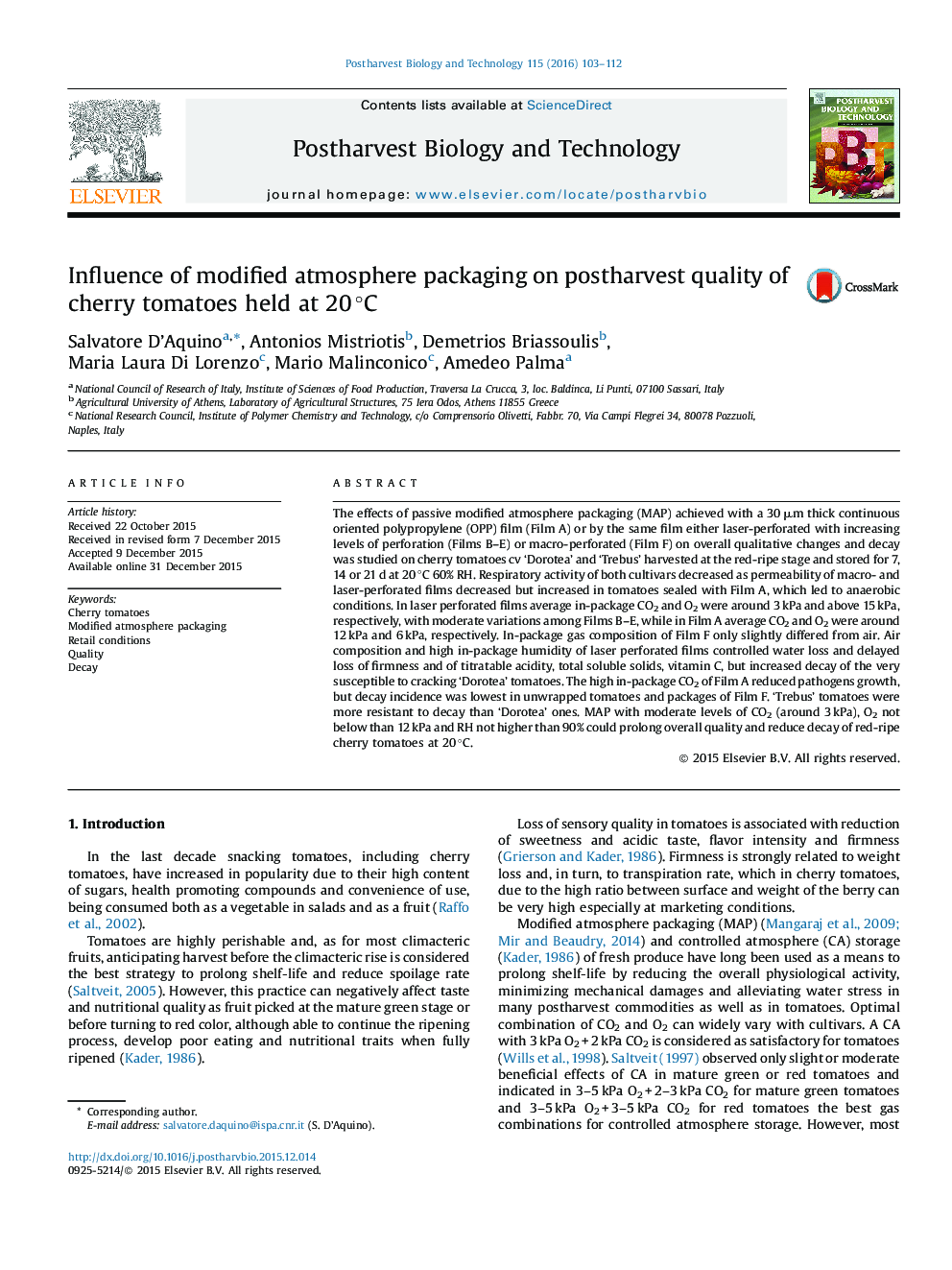| Article ID | Journal | Published Year | Pages | File Type |
|---|---|---|---|---|
| 4517775 | Postharvest Biology and Technology | 2016 | 10 Pages |
•Two cherry tomatoes cultivars were stored at 20 °C and 60–65% RH for 21 days.•Fruit were packaged in an OPP film either continuous or perforated.•In-package humidity increased decay in the cultivar most susceptible to cracking.•In-package gas composition achieved with perforated films preserved quality.•The continuous OPP film caused anaerobiosis and altered taste and chemical quality.
The effects of passive modified atmosphere packaging (MAP) achieved with a 30 μm thick continuous oriented polypropylene (OPP) film (Film A) or by the same film either laser-perforated with increasing levels of perforation (Films B–E) or macro-perforated (Film F) on overall qualitative changes and decay was studied on cherry tomatoes cv ‘Dorotea’ and ‘Trebus’ harvested at the red-ripe stage and stored for 7, 14 or 21 d at 20 °C 60% RH. Respiratory activity of both cultivars decreased as permeability of macro- and laser-perforated films decreased but increased in tomatoes sealed with Film A, which led to anaerobic conditions. In laser perforated films average in-package CO2 and O2 were around 3 kPa and above 15 kPa, respectively, with moderate variations among Films B–E, while in Film A average CO2 and O2 were around 12 kPa and 6 kPa, respectively. In-package gas composition of Film F only slightly differed from air. Air composition and high in-package humidity of laser perforated films controlled water loss and delayed loss of firmness and of titratable acidity, total soluble solids, vitamin C, but increased decay of the very susceptible to cracking ‘Dorotea’ tomatoes. The high in-package CO2 of Film A reduced pathogens growth, but decay incidence was lowest in unwrapped tomatoes and packages of Film F. ‘Trebus’ tomatoes were more resistant to decay than ‘Dorotea’ ones. MAP with moderate levels of CO2 (around 3 kPa), O2 not below than 12 kPa and RH not higher than 90% could prolong overall quality and reduce decay of red-ripe cherry tomatoes at 20 °C.
